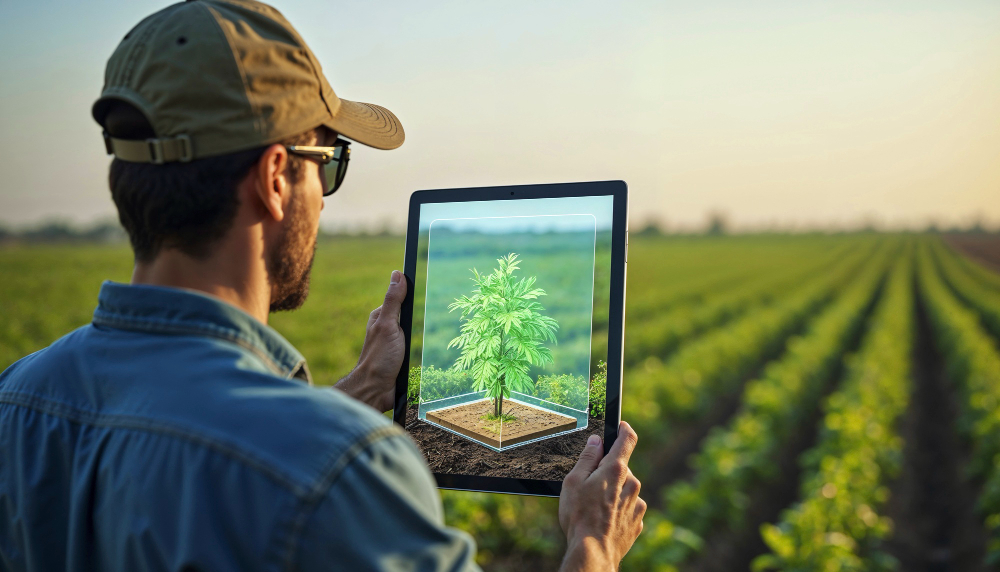Introduction: Why Space Farming Matters
As humanity faces challenges like climate change, overpopulation, and diminishing arable land, innovative solutions are more critical than ever. One such solution gaining attention is farming on asteroids. Imagine the possibility of growing crops beyond Earth, on barren rocks floating in space. It sounds like science fiction, but with advancements in space technology, this could soon become a reality.
Asteroids are rich in minerals and water, two vital components for supporting plant life. If scientists can harness these resources, farming in space could solve not only the issue of food production for astronauts but also provide solutions for food security on Earth. In this article, we will explore the technology, challenges, and benefits of farming on asteroids.
🚀 Can We Really Farm on Asteroids?
Asteroids, particularly carbon-rich C-type asteroids, contain a wealth of resources, including water and minerals, which could potentially support agriculture. NASA’s OSIRIS-REx mission has provided evidence that asteroid Bennu contains hydrated minerals, which indicates that the necessary building blocks for life might already exist in space.
However, farming on asteroids presents significant challenges. The lack of atmosphere and low gravity make traditional farming methods impossible. Plants need gravity to grow roots, and without an atmosphere, there is no protection from harmful radiation or extreme temperatures.
To overcome these challenges, scientists propose using advanced hydroponic systems, which are soil-less methods of growing plants. Hydroponics can function in sealed environments, making it a viable option for farming in space. Additionally, space agencies are working on creating artificial gravity environments and advanced greenhouses to simulate Earth-like conditions for growing crops.
🔬 The Technology Required for Farming on Asteroids
To grow crops on asteroids, several technologies would need to be developed or adapted. These include:
1. Artificial Gravity
One of the most significant challenges in space farming is the lack of gravity. Without gravity, water and nutrients do not flow in the same way as they do on Earth. This can lead to uneven growth, nutrient deficiencies, and other problems. To address this, artificial gravity systems could be designed to mimic Earth’s gravity and help plants grow properly.
2. Hydroponic Systems
Hydroponic farming is one of the most promising technologies for space farming. These systems allow plants to grow in a nutrient-rich solution without soil, which is ideal for the zero-gravity conditions on asteroids. By using hydroponics, plants can be cultivated in a controlled environment, reducing the need for soil and making the farming process more efficient.
3. Solar Energy
Asteroids are relatively close to the Sun, making them an excellent source of solar energy. Solar panels can be used to harness this energy, providing power to life-support systems, artificial gravity, and hydroponic setups. Solar energy could be the key to sustaining agriculture on asteroids, as it provides a reliable and renewable source of power.
4. 3D Printing
Another innovative technology that could be used for farming on asteroids is 3D printing. By using 3D printers, scientists could create structures such as greenhouses, plant containers, and other tools needed for farming in space. This would make it easier to adapt to the unique conditions of space farming and ensure that the necessary equipment is readily available.
🧪 The Benefits of Farming on Asteroids
Farming on asteroids could have a profound impact on both space exploration and Earth’s agriculture. Some of the potential benefits include:
1. Providing Food for Astronauts
One of the main reasons to farm on asteroids is to provide food for astronauts. Currently, space missions rely on food supplies sent from Earth, which are expensive and limited. By establishing farming systems on asteroids, astronauts could grow their own food, reducing their dependence on Earth-bound resources.
2. Supporting Long-Term Space Missions
As space agencies like NASA and private companies such as SpaceX plan missions to Mars and beyond, having a sustainable food source in space will be critical. Farming on asteroids could provide the necessary resources for long-term missions, making it possible for astronauts to live and work in space for extended periods without relying on Earth.
3. Helping Solve Earth’s Food Crisis
The technologies developed for farming on asteroids could also have applications on Earth. Techniques like hydroponics and aeroponics (growing plants in air or mist) are already being used to create sustainable farming solutions on Earth. By learning to farm in extreme conditions, scientists could develop new ways to increase food production and address the challenges of climate change and overpopulation.
4. Resource Extraction and Space Colonization
Asteroids are rich in metals and minerals, which could be extracted and used for various purposes. As space exploration progresses, these resources could be crucial for the construction of space colonies or the development of advanced technologies. Farming on asteroids could also be part of a larger strategy for space colonization, ensuring that humans can live and thrive in space.
⚠️ The Challenges of Farming on Asteroids
While farming on asteroids offers many exciting possibilities, it also presents several challenges:
1. Radiation Exposure
Without an atmosphere to protect crops from harmful solar radiation, farming on asteroids would require advanced shielding technologies. Radiation can damage plant cells and disrupt their growth, making it one of the most significant obstacles to space farming. Developing radiation-proof greenhouses and protective shields is essential to overcoming this issue.
2. Microgravity and Water Flow
Microgravity, or the lack of gravity, affects how plants grow. Water and nutrients do not flow the same way they do on Earth, which could lead to uneven growth and nutrient deficiencies. Research into artificial gravity and improved hydroponic systems is crucial to solving this problem.
3. Transporting Equipment and Resources
Getting the necessary equipment to an asteroid is no small feat. Launching rockets and transporting materials to space is expensive and time-consuming. Developing efficient and cost-effective transportation methods will be key to making space farming viable.
4. Sustainability of Life Support Systems
In addition to farming systems, a reliable life-support system will be needed to provide oxygen, water, and waste recycling. Creating closed-loop systems that can function for long periods without relying on Earth will be critical for sustaining human life on asteroids.
🛰️ Real-World Efforts in Space Farming
Several space agencies and private companies are already working on projects related to space farming:
- NASA’s Veggie Project: This project aims to grow plants aboard the International Space Station (ISS). In 2015, NASA successfully grew lettuce and other crops in space, proving that it is possible to cultivate food in space.
- MELiSSA Program: The European Space Agency’s (ESA) MELiSSA program is working on developing closed-loop life support systems, which will be essential for farming in space. The program is researching how to recycle air, water, and waste to support long-term space missions.
- Asteroid Mining Projects: Companies like Planetary Resources and Deep Space Industries are working on extracting resources from asteroids. These resources could be used for farming, as well as for building structures and supporting future space exploration missions.
🌍 Implications for Earth and the Future of Space Farming
The technologies developed for farming on asteroids will have a significant impact on Earth’s agriculture. Hydroponic and aeroponic systems developed for space could help solve some of Earth’s food security issues. Moreover, the resources extracted from asteroids could be used to power space missions, build space habitats, and support long-term colonization efforts.
Conclusion: A Step Toward the Future
While farming on asteroids may seem like a distant dream, the research and technology being developed today will shape the future of space exploration. The potential to grow food beyond Earth is not only critical for long-term space missions but could also provide innovative solutions for Earth’s food challenges.
As space agencies and private companies continue to push the boundaries of what is possible, farming on asteroids may one day be the key to humanity’s survival and success in space. With continued research and collaboration, the future of space farming is bright, and it could become a reality sooner than we think.
https://www.nasa.gov/feature/nasa-s-veggie-plant-growth-system-on-station







